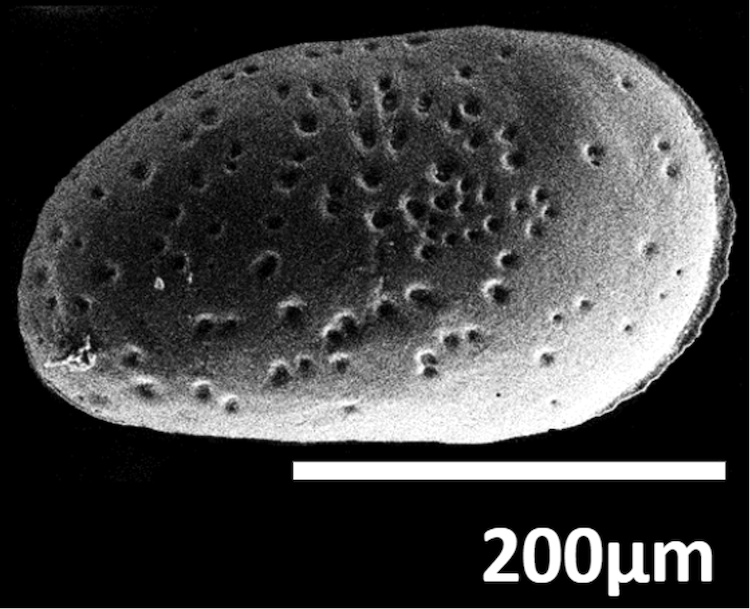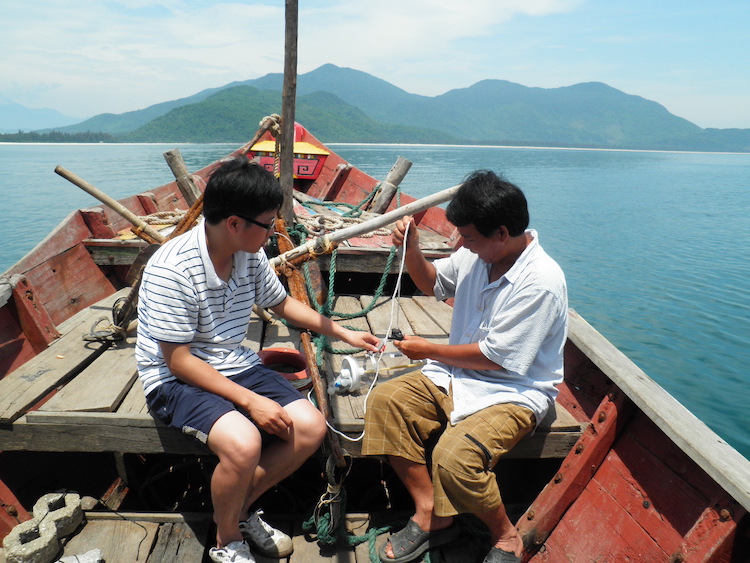Ostracods are aquatic crustaceans that range from 0.2 to 30 milimetres in size. Did you know that that these tiny creatures, also known as seed shrimp, can be used to indicate the pollution levels in lagoons in Southeast Asia?
This is the main finding of our new study published in Environmental Pollution, which uses ostracods collected from a coastal lagoon in Vietnam.
Ostracods produce a skeleton on the outside of their bodies that consists of two valves that open and close like a mussel shell. The shells are formed of calcium carbonate and are easily fossilised in the sediments in which they live. Ostracods first appeared 485 million years ago and their species can be found in a wide variety of aquatic environments from lakes and coastal wetlands to the deep oceans. They are even found in wet terrestrial sites such as in leaf litter and caves, and in water bodies deep underground.

Ostracods are highly sensitive to environmental changes, with some species capable of surviving in environments that are incredibly polluted. Some species such as Cyprideis salebrosa thrive on pollution. They have been found to dominate a Brazilian lagoon polluted by untreated domestic sewage containing a high concentration of heavy metals.
Despite the potential for ostracods to provide an indicator of pollution in degraded environments, there are relatively few comprehensive studies linking ostracods to aquatic pollution. Southeast Asia contains some of the world’s most degraded and polluted coastal ecosystems and no studies have examined the use of ostracods as pollution bioindicators in this region.
Our study focused on the ostracod communities and anthropogenic pollution in Lap An Lagoon, situated in central Vietnam and demonstrated that ostracods can be used as pollution bioindicators in the lagoons of Southeast Asia.

We took sediment samples from 14 sites within the lagoon and measured the sediment grain size, total organic carbon, organic matter and heavy metal concentrations – copper, iron, manganese, nickel, lead, and zinc. We also identified the ostracod species in the sediments by looking at their valves in the sediments under a binocular microscope.

We discovered that a diverse ostracod fauna comprising 79 species within 46 genera lived in Lap An Lagoon. By examining the distribution of ostracod species and environmental parameters across the lagoon, we identified four ostracod species assemblages. These ostracod species assemblages are representative of the following environments: nearshore shallow sandy, silty sand substrate, marginally toxic, and a transition from lagoon to shallow marine environments.
By comparing the total organic carbon of the sediments and heavy metal concentrations within the lagoon to the ostracod fauna, we found that this highlights the potential for particular Southeast Asian ostracods to be used as pollution bioindicators in other lagoonal environments. For example, S. impressa is indicative of marginally toxic environments composed of silt with total organic carbon content between 1 and 2%. The ostracod data we gathered forms a baseline for future pollution studies in this lagoon and others across Southeast Asia.
While Lap An Lagoon currently reflects conditions of low anthropogenic pollution, our findings suggest that the lagoon is transitioning to greater degree of pollution with increased heavy metal pollutants contained within the sediments. This heavy metal pollution emanates from anthropogenic sources around the lagoon, which could have negative impacts on the health of the environment and its surrounding communities in the future.